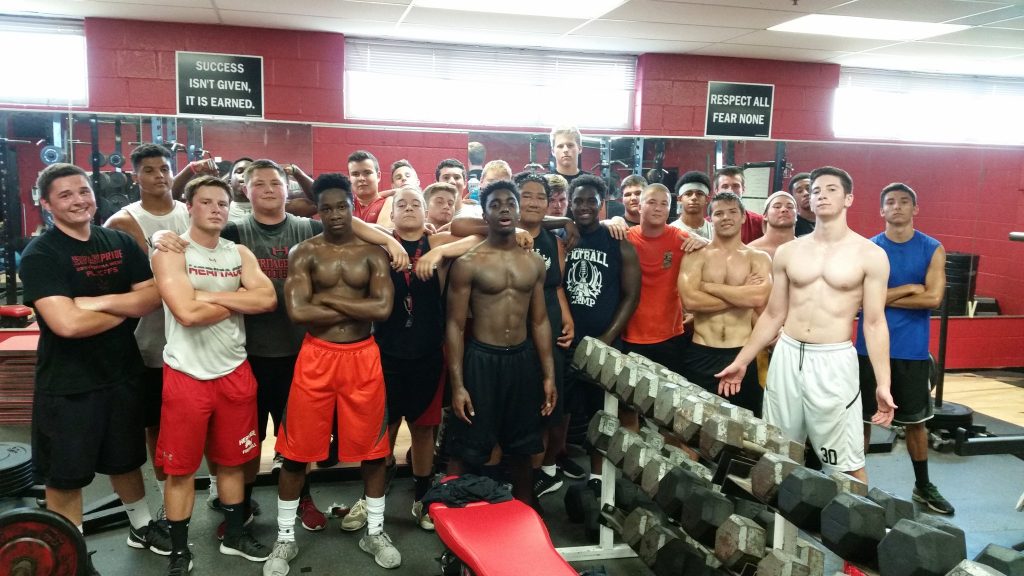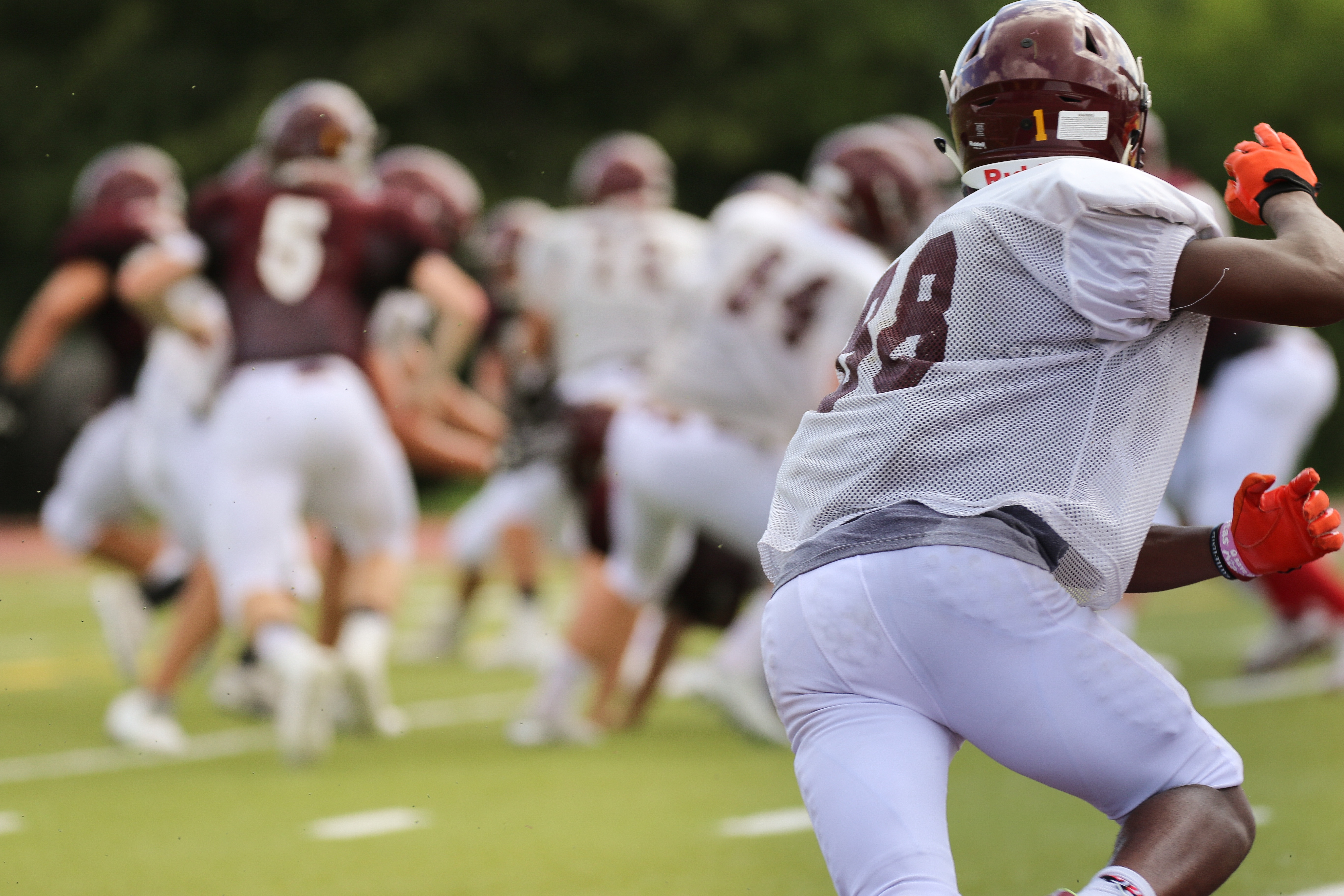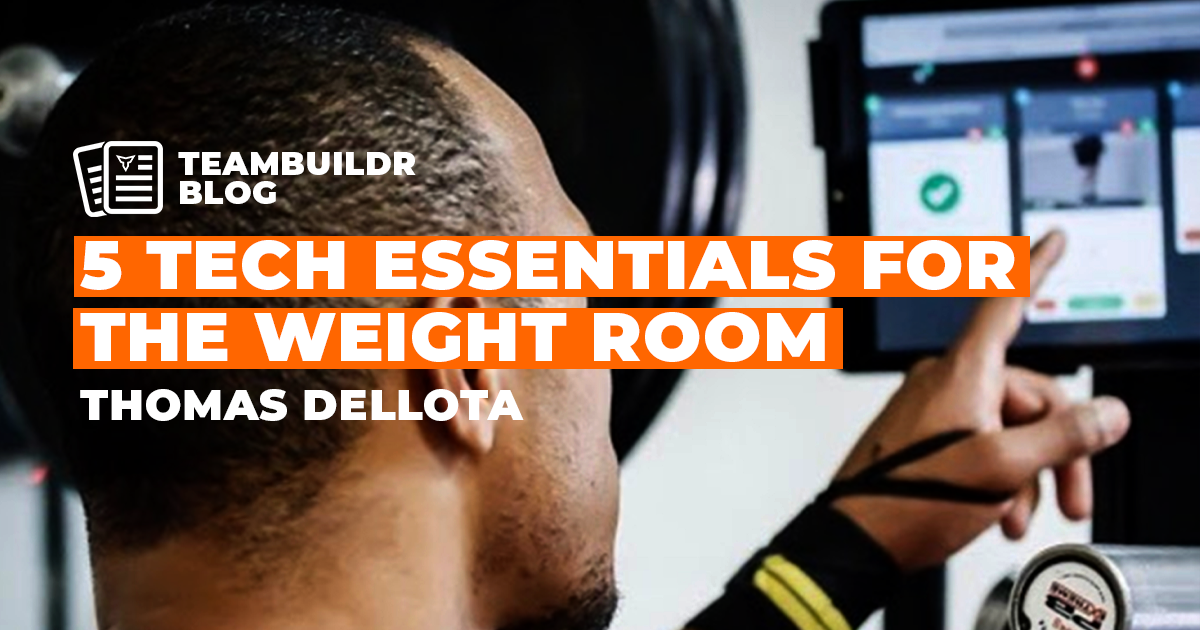Being a 1st Time High School Football Strength Coach - Part 2
Two coaches open up about what they learned this season as first time high school football strength coaches. This is Part 2 of a two-part article series on strength coaching in a high school football setting.
Being a high school football strength coach has to be one of the most rewarding jobs ever, however if you had told me three years ago that I would have been offered this volunteer position I would not have believed you. When I was offered this opportunity, I was a full time Engineer and a part-time power-lifter (I use part-time because I refuse to believe that powerlifting is just a hobby because hobbies don’t hurt like this).
My opportunity as a high school football strength coach started when a good friend of mine asked what my level of interest was in being a Fellowship of Christian Athletes Character Coach for my local high school. He explained what my role would be and upon my acceptance, we set up a meeting with Coach Prosser, the Head Football Coach for Heritage High School, and detailed, in full, what the Character Coach program comprised of too include its many benefits. Needless to say, Coach Prosser saw the potential and, with his approval and excitement, we instituted the program. However, he didn’t just want me to be a Character Coach, he also asked how I felt about becoming their strength coach since, at the time, they lacked both a strength coach and a strength and conditioning program. I gladly accepted with hesitation; I knew how to get powerlifting strong but was unsure I knew how to get “football strong.” But I was up for the challenge that high school football strength coaching presented!
Moving forward, I’m now in my third season as the Heritage High School’s football strength coach and I’ve learned several key lessons that I wanted to share with you guys:
The most important lesson I’ve learned is that you must have - and practice - patience
I came aboard Heritage High School’s program a week before their first game. As you can guess, my first season as a football strength coach, in my opinion, was not a successful one. For most of that first season, much of my focus was on teaching the athletes the basics of proper lifting while also pushing them to challenge themselves in the weight room. Another facet that needed to be honed in on was mental toughness and the fortitude to push through workouts, as well as, practices like one pushes through a tough day. Unfortunately, the kids didn’t see much improvements in the weight they were pushing or in their performance on the football field. It wasn’t until I was able to train the football team during an entire off-season that we started seeing improvements in both the weight room and on the field. Hard work truly does pay off! In only the second time in school’s history we made it to the playoffs, in which the coach partially attributed to the newly developed strength and mental toughness that was created in the weight room. And the success is continuing as it looks like we will be in the playoffs once more this year.
Ready to give our programming software a shot? Take a 14-day trial, no strings attached >>
And for only the second time in the school’s history we made it to the playoffs which the coach partially attributed to the newly developed strength and mental toughness that was created in the weight room. You need to stress to your athletes the patience, and time, it takes to build true strength and mental toughness. There is no magical overnight formula for gaining strength or size, just hard work and dedication. Encourage them to come up with some attainable short term goals and have them write them down for review on a daily basis. This will give them something in the short term to shoot for which, in turn, will help them with the endurance to each their long term goals.

More on the challenges! Within a high school football team, there are many different levels of experience.
I had athletes that ranged from having never touched a barbell to athletes exposed to their own personal trainers. The struggle for me was figuring out a way to meet the needs of every athlete without having additional strength coaches to assist me. My first two seasons, in my honest opinion, I feel I failed at overcoming this hurdle but this last year is where we made some positive strides in coming up with better solutions.
My first step was to treat all freshman as if they had never touched a barbell. I only get a few weeks with the freshman before the season starts, so instead of using those few weeks to teach technique on the major lifts, I designed programs using mostly dumbbells, kettlebells, and bodyweight lifts. This allows the freshman time to gain a little strength before the season starts; I save the technique training for the off-season and Saturdays, in which I’ve made strictly voluntary open gym sessions. With the Saturday sessions, the weight room is opened for 2 hours, affording us the time to work on weaknesses with the older kids and teach technique to the freshman. Moreover, the 2-hour window allows for a good thorough workout while also providing the space to apply the proper techniques. In the three years I’ve been with Heritage, both the JV and Varsity kids have experienced, at least, one complete off-season, exposing them to the major techniques in the more skilled lifts. With my JV and Varsity athletes I can now focus more on strengthening weaknesses and improving overall strength and explosiveness. This progression from bodyweight lifts to learning technique to improving weaknesses to increasing overall strength and explosiveness has created great results in the weight room and on the football field.
Results Come From Trust and Buy-In
In my limited experience as a high school football strength coach, I’ve realized that since the majority of the kids aren’t in tuned with weight training, more importantly, with strength training, almost any program will create some gains. However, until they believe in what you are trying to accomplish, they will never truly put forth the level of effort to see real gains. There wasn’t much improvement my first year at Heritage, partially because the athletes didn’t buy into what I was trying to convey; it seemed I wanted them to succeed more than they wanted it for themselves. Frustrating, for sure!
With my heart in the right place, I tried forcing them to succeed but that attempt was in vain. It wasn’t until I started encouraging them to succeed instead of pushing them to succeed that I saw a difference. There is truth in the saying, “people will not care what you have to say until they know that you care.” When I started to show the kids that I genuinely cared about their success in the weight room, on the field of play and in everyday life is when they started to believe in me and what I was trying to get them to accomplish. Positive results soon followed. I’m still tough on the kids and push them to their limits, but now they understand that it is tough love and not just me being tough on them.
Tools for Success
Being that my background is in engineering, I relied heavily on Excel spreadsheets and many different forms of paper logs to track progresses and regresses. The spreadsheets become cumbersome and inundated with useless data points while the paper logs would always be left behind. However, the ones I did get back for analysis, were barely legible. Needless to say, tracking good data became a tall order. Having the proper tools in place can help to create the successes we seek in life. The tools that I can attribute my strength coaching success to is a program called TeamBuildr.
TeamBuildr provided an easier vehicle to track the data necessary to appropriately affix the proper programs for each athlete. The kids hated carrying around sheets of paper, so that was an ineffective way to keep the kids motivated or in tuned to what their progresses were and where to focus more attention. Having so many novice weightlifters in the weight room, it was nice to be able to build programs based off of percentages to eliminate the guesswork for the kids in what weights to use. One of the biggest advantages of TeamBuildr is that it helps me program, track, and analyze progress efficiently. As a full-time Engineer, dedicated power-lifter and father of five beautiful children, my time is extremely limited. Teambuildr has afforded me the time to do all those things and still be an effective strength coach. With this tool in place, I can attribute some of my success to TeamBuildr.
Lastly, Be a Student of Your Craft
Coming from a powerlifting background there was a lot that I didn’t know about training a football team. I wasn’t knowledgeable about developing functional strength that would transition to the football field. So daily I am learning from others who have a lot more experience than I do. I am always on different websites trying to soak up everything I can from the experts. I’m constantly reaching out to current strength coaches to ask as many questions as they are willing to answer. I’m also always contacting local strength coaches to inquire if they’ll allow me to sit in and watch how they integrate their programs with their athletes. Some information I take with me to use, and some I don’t. But I’m never closed minded. This is the only way to be successful in helping your athletes reach their full potential.
Each year for the past three years Heritage has seen some improvements on the football field which the head football coach will say is partially because of what I’ve been able to do with his athletes in the weight room. Our weight lifting program isn’t where I want it yet, but I believe that we are moving in the right direction. As high school football strength coaches, I believe that it is important to share our experiences, both good and bad so that as a community we can continue growing and helping coaches to see that we are a necessity for their teams to be successful.
Carnadi Ford is the Head Strength Coach at Heritage High School in addition to being a full-time engineer and part-time powerlifter.
Subscribe to our blog
Subscribe to receive the latest blog posts to your inbox every week.
Related posts

How TeamBuildr Became a MLB Coaching Software for Strength Coaches

Being a 1st Time High School Football Strength Coach - Part 1

